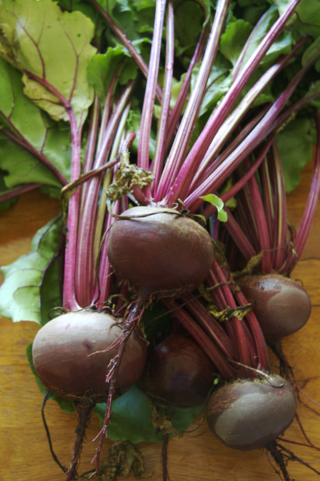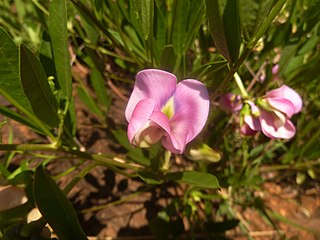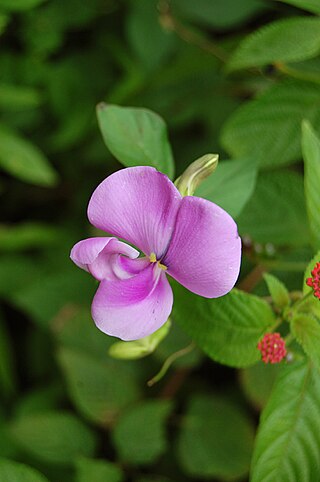
The turnip or white turnip is a root vegetable commonly grown in temperate climates worldwide for its white, fleshy taproot. Small, tender varieties are grown for human consumption, while larger varieties are grown as feed for livestock. The name turnip – used in many regions – may also be used to refer to rutabaga, which is a different but related vegetable.

The radish is a flowering plant in the mustard family, Brassicaceae. Its large taproot is commonly used as a root vegetable, although the entire plant is edible and its leaves are sometimes used as a leaf vegetable. Originally domesticated in Asia, radishes are now grown and consumed throughout the world. The radish is sometimes considered to form a species complex with the wild radish, and instead given the trinomial name Raphanus raphanistrum subsp. sativus.

Root vegetables are underground plant parts eaten by humans or animals as food. In agricultural and culinary terminology, the term applies to true roots such as taproots and tuberous roots as well as non-roots such as bulbs, corms, rhizomes, and stem tubers.

Legumes are plants in the family Fabaceae, or the fruit or seeds of such plants. When used as a dry grain for human consumption, the seeds are also called pulses. Legumes are grown agriculturally, primarily for human consumption, but also as livestock forage and silage, and as soil-enhancing green manure. Well-known legumes include beans, chickpeas, peanuts, lentils, lupins, mesquite, carob, tamarind, alfalfa, and clover. Legumes produce a botanically unique type of fruit – a simple dry fruit that develops from a simple carpel and usually dehisces on two sides.

The beetroot or beet is the taproot portion of a Beta vulgaris subsp. vulgaris plant in the Conditiva Group. The plant is a root vegetable also known as the table beet, garden beet, dinner beet, or else categorized by color: red beet or golden beet. It is also a leaf vegetable called beet greens. Beetroot can be eaten raw, roasted, steamed, or boiled. Beetroot can also be canned, either whole or cut up, and often are pickled, spiced, or served in a sweet-and-sour sauce.

Ullucus is a genus of flowering plants in the family Basellaceae, with one species, Ullucus tuberosus, a plant grown primarily as a root vegetable, secondarily as a leaf vegetable. The name ulluco is derived from the Quechua word ulluku, but depending on the region, it has many different names. These include illaco, melloco, chungua or ruba, olluco or papalisa, or ulluma.

Chayote, also known as christophine, mirliton and choko, is an edible plant belonging to the gourd family, Cucurbitaceae. This fruit was first cultivated in Mesoamerica between southern Mexico and Honduras, with the most genetic diversity available in both Mexico and Guatemala. It is one of several foods introduced to the Old World during the Columbian Exchange. At that time, the plant spread to other parts of the Americas, ultimately causing it to be integrated into the cuisine of many Latin American nations.

The winged bean, also known as cigarillas, Goa bean, four-angled bean, four-cornered bean, manila bean, princess bean, star bean, kamrangi bean, pea, or dragon bean, is a tropical herbaceous legume plant.

Vigna aconitifolia is a drought-resistant legume, commonly grown in arid and semi-arid regions of India. It is commonly called mat bean, moth bean, matki or dew bean. The pods, sprouts and protein-rich seeds of this crop are commonly consumed in India. Moth bean can be grown on many soil types, and can also act as a pasture legume.

The asparagus bean is a legume cultivated for its edible green pods containing immature seeds, like the green bean. It is also known as yardlong bean, pea bean, long-podded cowpea, Chinese long bean, snake bean, bodi, and bora. Despite the common name of "yardlong", the pods are actually only about half a yard long, so the subspecies name sesquipedalis is a more accurate approximation.

Telfairia occidentalis is a tropical vine grown in West Africa as a leaf vegetable and for its edible seeds. Common names for the plant include fluted gourd, fluted pumpkin, ugu, "Eweroko" ,okwukwo-wiri, and ikong-ubong, "Akwukwor ri". T. occidentalis is a member of the family Cucurbitaceae and is indigenous to southern Nigeria. The fluted gourd grows in many nations of West Africa, but is mainly cultivated in southeastern Nigeria and it is used primarily in soups and herbal medicines. Although the fruit is inedible, the seeds produced by the gourd are high in protein and fat, and can, therefore, contribute to a well-balanced diet. The plant is a drought-tolerant, dioecious perennial that is usually grown trellised.

Pachyrhizus erosus, commonly known as jícama or Mexican turnip, is a native Mesoamerican vine, although the name jícama most commonly refers to the plant's edible tuberous root. It is in the pea family (Fabaceae). Pachyrhizus tuberosus and Pachyrhizus ahipa are the other two cultivated species in the genus. The naming of this group of edible plants can sometimes be confusing, with much overlap of similar or the same common names.

Yam is the common name for some plant species in the genus Dioscorea that form edible tubers.
Domesticated plants of Mesoamerica, established by agricultural developments and practices over several thousand years of pre-Columbian history, include maize and capsicum. A list of Mesoamerican cultivars and staples:

Canavalia gladiata, the sword bean or scimitar bean, is a domesticated plant species in the legume family Fabaceae. It is used as a vegetable in interior central and south central India, though not commercially farmed. The unripe pods are also eaten as a vegetable in Africa and Asia.

Sphenostylis is a genus of flowering plants in the legume family, Fabaceae. It includes seven species of prostrate, climbing or erect herbs or subshrubs. They are native to sub-Saharan Africa, where they grow in seasonally-dry tropical and subtropical open forest, woodland, bushland and thicket, wooded grassland, and grassland, mainly in the Zambezian and Sudanian regions. It belongs to the subfamily Faboideae. Sphenostylis contains several species useful as food sources including Sphenostylis stenocarpa. Sphenostylis stenocarpa is characterized by its fruit (legume) and stipulated leaves.

Pachyrhizus ahipa, also called the ahipa or Andean yam bean, is a tuberous root-producing legume, which is distributed mainly in the Andean region.

Vigna vexillata, the Zombi pea or wild cowpea, is a variable, perennial climbing plant that is pantropical, found in regions such as Ethiopia, Nigeria, and Venezuela.
The Future 50 Foods report, subtitled "50 foods for healthier people and a healthier planet", was published in February 2019 by the World Wide Fund for Nature (WWF) and Knorr. It identifies 50 plant-based foods that can increase dietary nutritional value and reduce environmental impacts of the food supply, promoting sustainable global food systems.

















